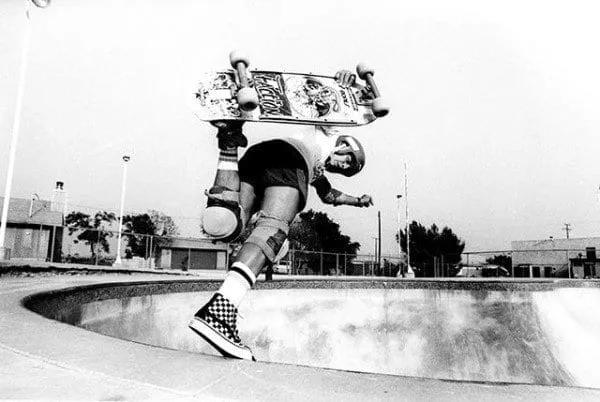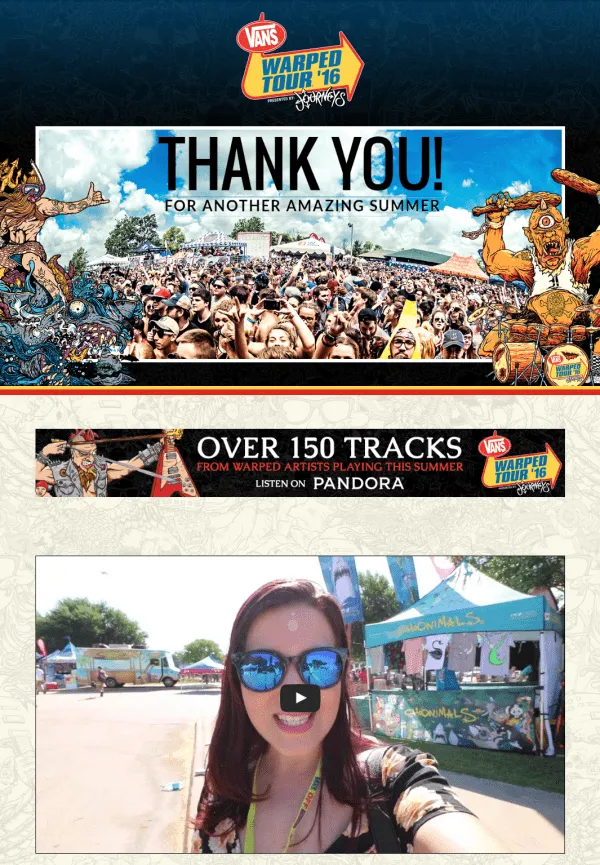
When the Van Doren family established Vans in 1966, their goals were simple, yet radical for businesses of that age.
The Californian-based company simply sought to manufacture footwear and sell them directly to customers.
Promising as that proposition was, the first days of Vans were comically bad. Apparently, the owners didn’t have cash on hand for change, and had to ask their customers to pay the next day (which they did by the way).
As if a glutton for punishment, in the 1970s, Vans began to market its shoes to skateboarders, the cultural lepers of sun-kissed California.
Yet, that decision blossomed into commercial and branding success.
Since then, Vans has vigorously projected a brand image of subversion, creativity, and self-fulfilment. Its jazz-striped shoes have attained cult status among its loyal fan-base.
Let’s take a look then, at how Vans achieved and maintained both its renegade image and contrarian clientele.
In the 1970s, Vans capitalized on two emerging crazes in Southern California: skateboarding and to a lesser extent, bicycle motocross (BMX).
Members of these sports and their surrounding cultures were often depicted as unconventional and anti-establishment.
Indeed, skateboarding, for instance, was more than just a sport. “Skateboarding wasn’t a passing fancy,” proclaimed Thrasher magazine, “it was a lifestyle choice”.
Vans’ footwear quickly became a favourite among skateboarders, who requested new designs, colours, patterns, and textures.

The famous 'Style 38' (or Sk8-Hi) Vans shoes. Image courtesy of Vans.com.
In response, Vans introduced new models of its shoes and sneakers, including its iconic ‘Old Skool’, ‘The Era’, and ‘Style 38’ series. These sets of footwear were not only aesthetically eccentric, but also ergonomically built. They were durable, and provided superior flexibility, grip, and ankle support.
The company nurtured its relationship with skateboarding, BMX, and other alternative action-sports, thus sowing the seeds of its enduring association with youth, adventure, and self-expression.
Further reading: Just like Vans has, many other brands have used sports to promote their products. Find out how here in our sports marketing article.
In 1982, Vans shoes featured in the film, Fast Times At Ridgemont High.
Sean Penn’s character, a rebellious surfer-skater-musician, can be seen sporting Vans’ Classic Slip-Ons.
This however, wasn’t a planned case of product placement. Penn fell in love with the shoes, insisting he wear them on camera.
The movie, itself a cult hit, helped popularized the shoes, and turned Vans into a counter-cultural phenomenon.
Interestingly, the Slip-Ons’ history exemplified the close engagement between Vans and its customers.
The shoes’ chequered-board design was inspired by fans colouring the waffled soles of their Vans sneakers. Noticing this fad, Vans honoured it by shifting the design to the shoes’ outward exteriors.
Throughout the decades, Vans has quickly adapted to changing fashion fads and cultural trends.
Vans footwear has formed the uniform of skateboarders, BMXers, punk rockers, street artists, snowboarders, comic book enthusiasts, and even students.
The appeal of Vans to this diverse congregation is perhaps, a deserved culmination of company ethos and astute marketing.
Specifically, Vans has, from the start, conferred onto its customers a considerable degree of control over its products (e.g. color, style, materials, function).
In this way, Vans has managed to stay true to its heritage and embrace innovation and creativity. According to Laura Doherty, Vans’ public relations manager, the company is “rooted in skateboarding but [has] become a youth culture brand”.
Unsurprisingly, as any “youth culture brand” would do, Vans maintains a prolific presence on major social media platforms, such as Instagram, Vine, and Twitter.
What’s interesting about Vans’ social media accounts is that they’re image-heavy.
Its Instagram account is littered with beautiful photos of Vans products, and the evocative lifestyles of its wearers.

Similarly, on Twitter, Vans uploads original footage of its gallivanting staff and the celebrities that work with them.
In addition to social media, Vans has a successful (and selective) record of collaborations.
“We say no to things more often than we say yes […] [and] that includes collaborations,” declared Kevin Bailey, the president of the action sports division of VF corporation, Vans’ parent company.
For Vans, collaborations must involve figures that align with Vans’ values and image.
For example, in the 1970s and 1980s, Vans was the first to sponsor well-known skateboarders, paying them to wear its shoes in competitions and public.
“They were the only company at that time that would pay us, the skateboarders, any money whatsoever,” said Stacy Peralta, a skateboarding legend. This earned Vans a passionate group of influential brand advocates.
Skateboarders aside, Vans has also collaborated with popular rock bands like Metallica and Bullet For My Valentine.
Indicative of Vans’ pursuit for greater inclusivity, it teamed up with well-known violinist Lindsey Stirling in 2013.
This careful approach to collaboration keeps Vans relevant, influencing its fans to emulate its associated image and celebrities.

In 1995, Vans launched the Warped Tour, now North America’s longest-running music festival.
The tour has launched the careers of Eminem, Fall Out Boy, Paramore, and My Chemical Romance, to name a few.
Despite its unruly connotations, the Warped Tour is probably one of the more wholesome concert options out there. Parents are able to attend shows for free when they accompany their kids. And ticket and beverage price remain shockingly affordable.
These features enables Vans to connect with younger audiences, thereby ensuring the brand’s survival through and for future generations.
_____
Read next: Footwear Referral Program Examples: Greats
Hydar reads History at Nanyang Technological University. He likes cats and Cersei Lannister.
Grow your sales at a ridiculously
lower CAC.